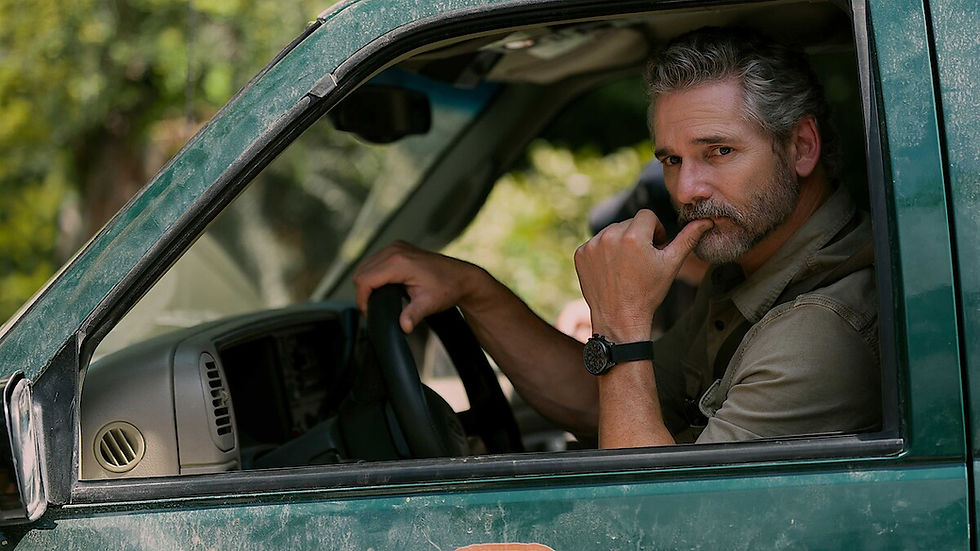
Television
Alien Earth: Memory, Machines, and the Space Between
FX's Alien Earth manages something rare: it revisits one of science fiction’s most recognisable cinematic worlds without falling into routine.
© FX
Roy Batty
14 augustus 2025
Alien Earth draws from the Alien franchise, yes, but rather than simply echoing it, the series opens up fresh conceptual terrain, particularly when it comes to questions of identity, memory, and human purpose.
Firmly embedded in the Alien universe, the show doesn’t rehash creature-feature theatrics. Instead, it leans into the deeper anxieties that have always simmered beneath the surface of the series: what makes us human, and what happens when the line between natural and artificial life becomes indistinct.
Visually, the series is what I hoped it would be. It understands the architectural DNA of Alien and Aliens: narrow corridors, sudden silences, blinking interfaces and reimagines them with tactility and restraint. It’s not showy, but it feels right. Those of us who remember how the original films moved, how they let the camera breathe and the shadows build, will recognise the same rhythm here. That deliberate pace isn’t nostalgia. It’s an aesthetic conviction.
More than any recent addition to the franchise, Alien Earth understands that terror begins with a whisper, not a roar. Its moments of unease arise from isolation, system glitches, or a poorly timed pause in a conversation. There’s very little spectacle for its own sake. Instead, the drama emerges from the philosophical questions that underpin its narrative.
At the heart of the story is Wendy (Sydney Chandler), a synthetic character whose development rivals Bishop in terms of subtlety and resonance. Their reflections on memory, decision-making, and emotional fidelity are anything but mechanical. One particular exchange—about whether learned pain can produce genuine empathy—felt like a discarded page from Blade Runner, albeit one with more dread.

This show doesn’t ask “Can machines feel?” It asks something more disturbing: “If they do feel, what makes them less human than us?” And if we humans, in this future, have become more automated—following protocol, ignoring intuition—then who, exactly, is evolving? These aren’t rhetorical flourishes. The show lets them hang, unanswered, like a malfunctioning satellite looping the planet with no signal to send.
Timothy Olyphant, playing one of the show’s most enigmatic figures, seems to carry this theme in his very presence. His character’s appearance—a shock of pale hair, a certain icy stillness in the eyes—feels like an intentional nod to Rutger Hauer’s Roy Batty from Blade Runner. The resemblance is more than visual. There’s the same sense of coiled thoughtfulness, as if each word is weighed against some private countdown only he knows.

Alien Earth also refrains from drenching everything in CGI. Surfaces are worn, control panels hum, and even the planet exteriors feel convincingly indifferent. There’s a physicality here that’s sorely missed in much of contemporary sci-fi. It’s closer in tone to Outland or Silent Running than to anything digitally oversaturated.
And yes, there are breadcrumbs for fans of the series. A flickering Weyland-Yutani logo. A corridor layout that mirrors the Nostromo. Even a cargo manifest that names certain long-lost missions. But the show never mugs for the camera. These are notes for those who know the tune.
It’s also worth pointing out how well the series uses sound. Not music, which is used sparingly, but sound itself: the tap of a relay, the slow hiss of decompression, a stutter in speech patterns. It reminded me of The Thing—not the gore, but that ambient fear where every minor sound might signal the start of something worse.

What resonates most is how Alien Earth handles the existential weight of its subject. Free will, memory, replication, control—these ideas are sewn through the plot without being declaimed. It's a show that trusts its audience to sit with ambiguity, to feel discomfort without immediate payoff.
In short, Alien Earth earns its place in the Alien universe not by trying to outgun it, but by deepening it. Its scares are slow-burn. Its drama is intimate. And its most lasting impact may be the unsettling suggestion that in trying to create machines in our image, we may have forgotten what that image once meant.
The latest














